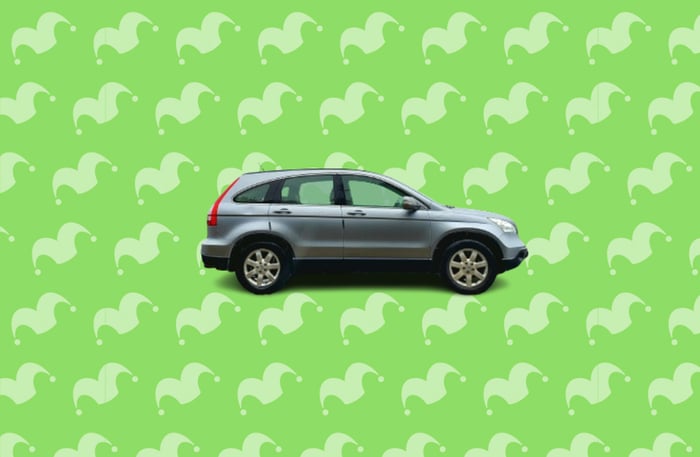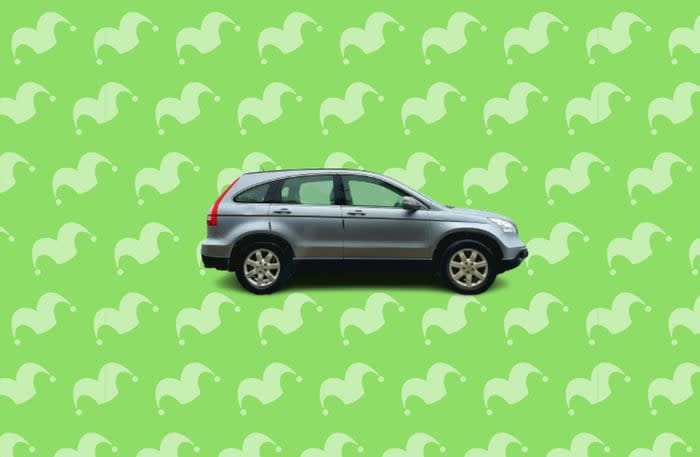Auto Insurers Claim to Be Losing Money. Could That Possibly Be True?

[ad_1]


Image source: Upsplash/The Motley Fool
Between February 2023 and February 2024, auto insurance rates increased by nearly 21%. The last time rates jumped by that much was 1976, when Gerald Ford was in the White House, disco was king, and Sylvester Stallone released the first of seven Rocky movies.
Still, the knowledge that it’s happened before does not make new, higher rates any easier to stomach. The twist this time? Insurers are in trouble, too.
The Motley Fool Ascent asked Breanne Armstrong, Director of Insurance Intelligence for global marketing research firm J.D. Power, to explain what’s going on from both the insurance company and consumer perspectives.
Insurance companies
It’s been a tough few years for insurers. Thanks to a perfect storm of circumstances, some struggle to stay afloat. Here’s how Armstrong explained what’s going on:
-
Higher vehicle repair and replacement costs: As of June 2023, vehicle repair costs surged by nearly 20% year over year, driven by technological advancements, supply chain disruptions, longer vehicle ownership, increased accident frequency and severity, and a shortage of auto repair technicians.
-
Increasing healthcare and medical costs: Healthcare costs escalated, impacting auto insurance due to severe accidents. Factors include advanced medical technology, rising drug prices, higher medical salaries, defensive medical practices, and market-driven pricing.
-
Increased severity of auto claims: The severity of claims for bodily injury, property damage, and collision has significantly increased, likely due to driver inattentiveness and riskier behaviors.
-
Fraud: Insurance fraud is big business. The next time someone you know brags about “getting one over on their insurance company,” you may want to thank them for the estimated $400 to $700 added to the average annual premium due to fraudulent claims. According to Armstrong, complaints related to insurance fraud jumped by 115% between 2019 and 2023.
-
Litigation costs: Litigation costs and changing societal attitudes toward risk responsibility are driving claims costs up, leading to increased premiums.
-
Climate change: The frequency and severity of natural disasters have reached record highs, with 28 $1-billion-loss events in 2023 alone. While climate change may be most closely associated with an increase in homeowners insurance, natural disasters can damage anything, including vehicles.
-
Overall inflation: Insurance payouts have risen due to inflation not matched by equivalent increases in premiums, leading insurers to adjust rates to maintain financial health.
-
Combined ratio data: Insurance companies use combined ratio data to illustrate whether they’re making or losing money. It’s calculated by dividing payouts by the amount of money earned through premiums. In its simplest form, a combined ratio below 100% indicates that the insurer is making a profit, and a ratio above 100% means the insurer is paying out more in claims than it’s receiving in premiums. The combined ratio data for auto insurers in 2023 was 105% (an improvement over 2022, when the ratio was 112%).
In short, insurance companies can’t keep their doors open without making money, and some are finding it impossible to fight all these factors at the same time.
Read more: check out our picks for the best car insurance companies
Are consumers jumping ship?
According to J.D. Power’s 2024 Auto Insurance Shopping Study, nearly half (49%) of auto insurance customers have actively shopped for a new policy in the past year. Of those, 29% have switched carriers. Interestingly, the switch rates are highest among members of Generation Z (born between 1997 and 2012), none of whom were born when the last huge spike in auto insurance rates occurred.
Before you make a final decision about your policy, though, J.D. Power recommends you take steps to lower your rate. Here’s how:
-
Speak with your agent: Your agent would rather help you score a lower premium than lose you as a customer, and may have money-saving ideas that have not occurred to you.
-
Ask about discounts: Ask for a full menu of available discounts and take advantage of any that apply to you.
-
Request a policy review: Ask your insurance company to review your policy and coverages to learn if there’s any way to reduce your premium.
-
Bundle: If you don’t currently bundle different types of coverage, now is the time to do so and save.
-
Take advantage of usage-based insurance (UBI): Drivers can score a healthy discount by allowing the insurer to track their driving habits with a mobile app or in-vehicle computer. The better you drive, the steeper the discount.
-
Increase your deductible: As long as you have enough put away in an emergency account to cover the deductible, raising it will lower your premiums.
Trust matters
Despite higher rates, how a policyholder feels about their insurance company still helps determine whether they’re willing to shop for new coverage elsewhere. Armstrong points to 2024 data collected by AIS Insurance, showing how the level of trust a customer has in their insurer impacts loyalty.
Among consumers who claim to have “high trust” in their insurer and have not received an insurer-initiated rate increase, 92% say they will definitely renew their policies when the time comes. Among those with high trust who have received an insurer-initiated increase, 87% say they will definitely renew.
No one is immune from economic challenges, including insurance companies. If your rates have increased, understand that it’s probably not personal. It’s all about insurers making enough money to continue operating in your region of the country. In the meantime, there’s no harm in seeking cheaper auto insurance coverage.
Alert: highest cash back card we’ve seen now has 0% intro APR until 2025
This credit card is not just good – it’s so exceptional that our experts use it personally. It features a 0% intro APR for 15 months, a cash back rate of up to 5%, and all somehow for no annual fee!
Click here to read our full review for free and apply in just 2 minutes.
We’re firm believers in the Golden Rule, which is why editorial opinions are ours alone and have not been previously reviewed, approved, or endorsed by included advertisers. The Ascent does not cover all offers on the market. Editorial content from The Ascent is separate from The Motley Fool editorial content and is created by a different analyst team.The Motley Fool has a disclosure policy.
[ad_2]
Source link



